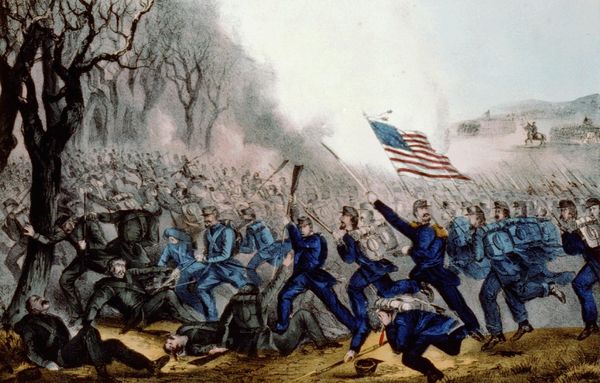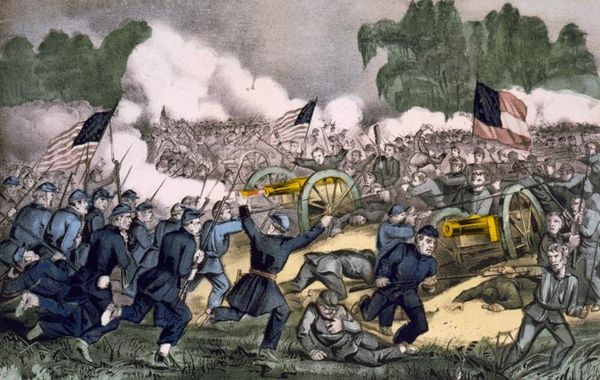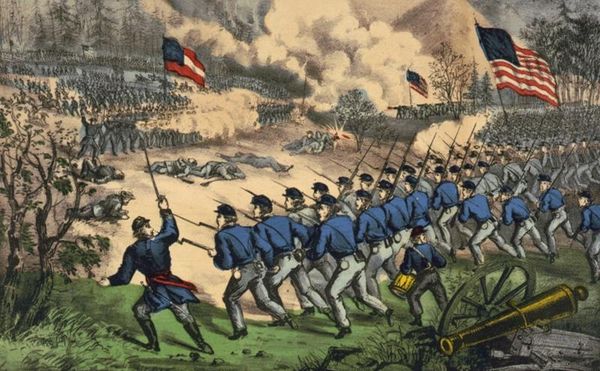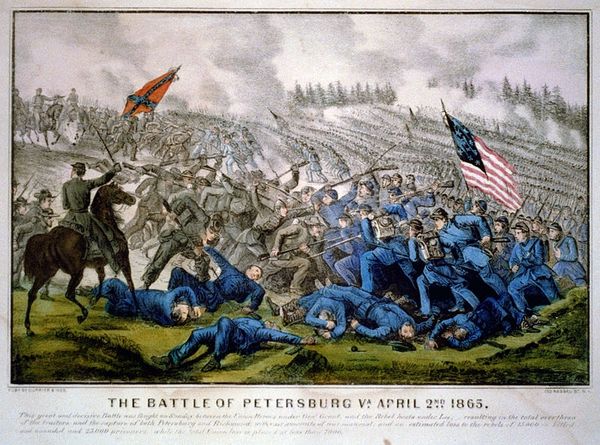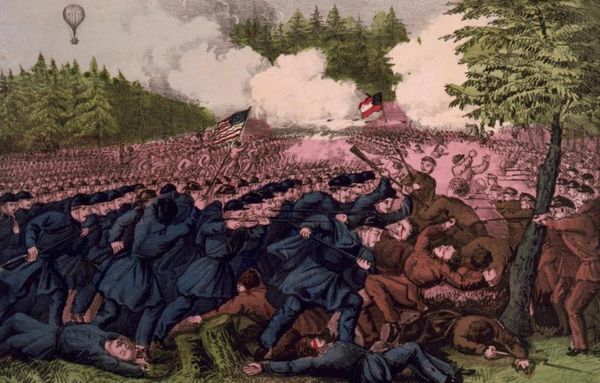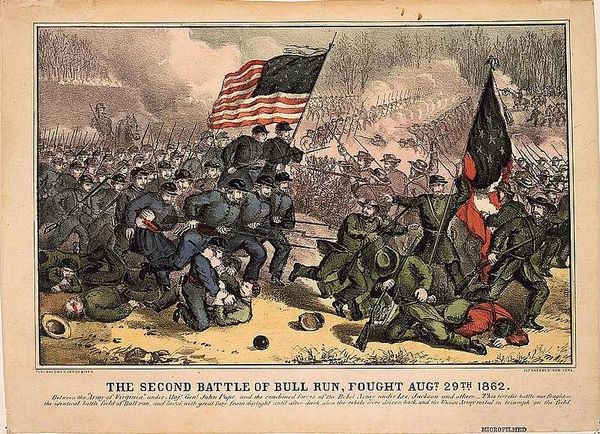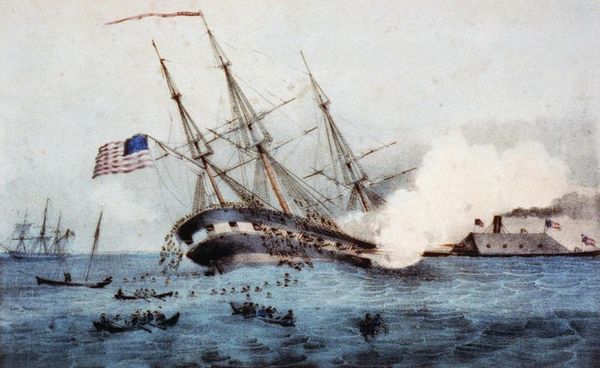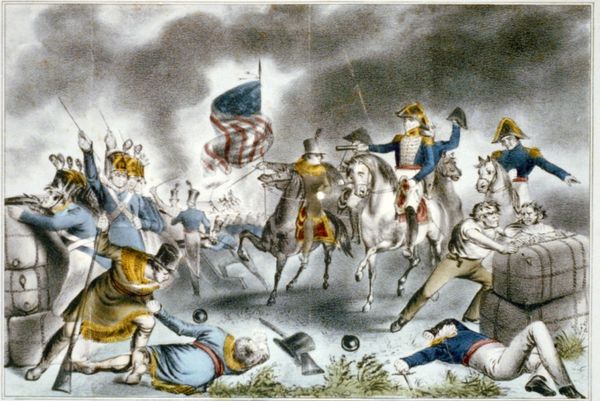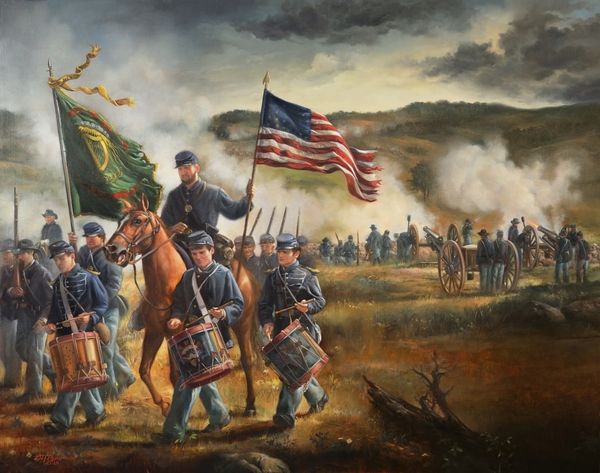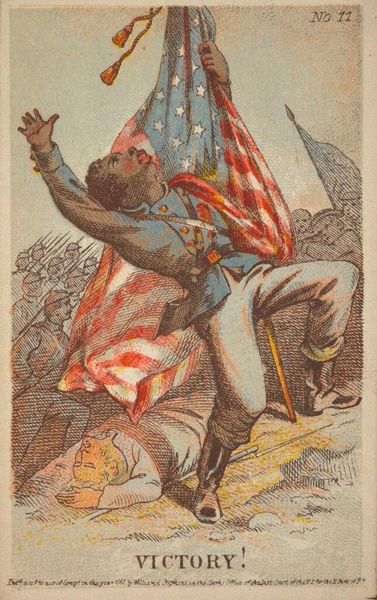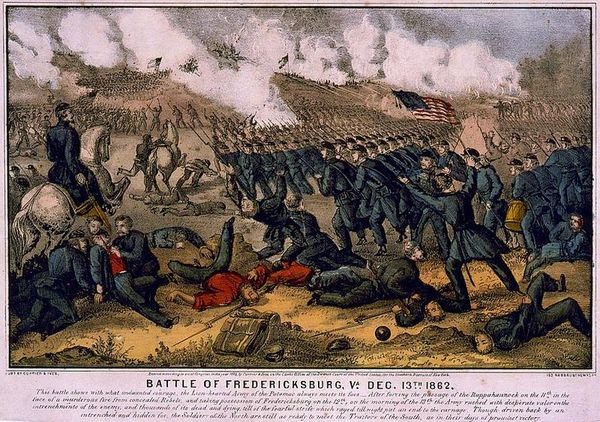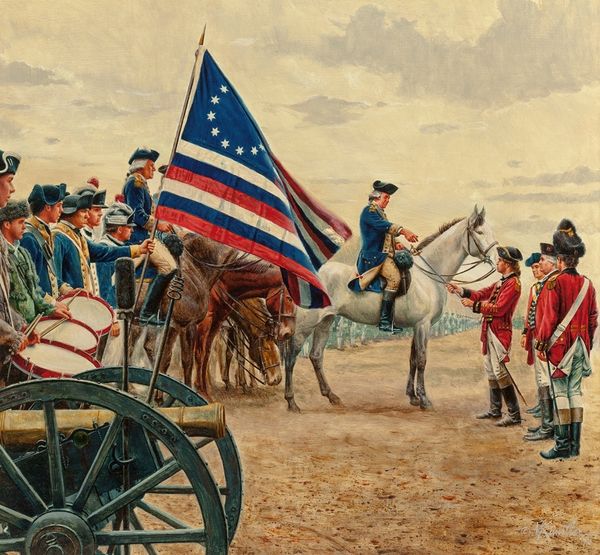
Copyright: Public domain
"Capture of Roanoke Island, Feby. 8th 1862" was made by Currier and Ives, and it's a hand-colored lithograph, a popular method for mass-producing images in the 19th century. The print shows a dramatic, glorified vision of the Union army's victory. What’s interesting is the way lithography allowed for images like this to be widely distributed, shaping public opinion and even stoking patriotic fervor. The process begins with a smooth stone, on which the image is drawn with a greasy crayon. The stone is then treated with chemicals, so that ink adheres only to the drawn areas. Consider the labor involved: from the quarrying of the lithographic stone, to the artist creating the image, to the printers running off hundreds of copies. Each impression would have then been hand-colored, piecework that was often done by women. This print isn't just a picture of a battle; it’s a product of a whole system of labor, of image-making as a form of industry. This challenges any high/low distinction, and shows the powerful role that prints played in shaping the narrative of the Civil War.
Comments
No comments
Be the first to comment and join the conversation on the ultimate creative platform.
